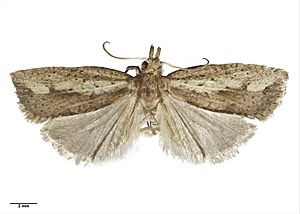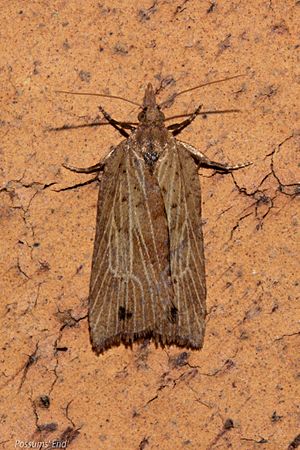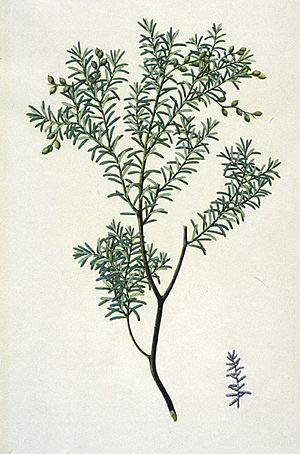Blacklegged leafroller facts for kids
Quick facts for kids Blacklegged leafroller |
|
|---|---|
 |
|
| Male holotype specimen held at the Auckland War Memorial Museum. | |
| Scientific classification | |
| Kingdom: | |
| Phylum: | |
| Class: | |
| Order: | |
| Family: | |
| Genus: |
Planotortrix
|
| Species: |
P. notophaea
|
| Binomial name | |
| Planotortrix notophaea (Turner, 1926)
|
|
| Synonyms | |
|
|
The Planotortrix notophaea, also known as the blacklegged leafroller, is a type of moth. It belongs to the Tortricidae family, which are often called leafroller moths. This moth is special because it is endemic to New Zealand. This means it is naturally found only in New Zealand.
It was once seen near Sydney in Australia. However, scientists believe this group of moths there has now disappeared.
Contents
How This Moth Got Its Name
This moth was first described in 1926 by a scientist named A. J. Turner. He gave it the name Tortrix notophaea. Turner studied a moth specimen that was sent to him from New Zealand. This moth had grown from a plant cutting collected in Sydney, Australia.
The original specimen used to describe this moth is now kept at the New Zealand Arthropod Collection. Since no other moths like it have been found in Australia, scientists think that group is now extinct. It is thought that this moth might have arrived in Sydney from a plant nursery.
Later, in 1928, another scientist named George Hudson drew this moth. He called it Tortrix excessana. In 1946, J. T. Salmon thought he had found a new type of this moth. He named it Ctenopseutis obliquana distincta. The moth Salmon studied was found on Great Island in New Zealand. This specimen is now at the Auckland War Memorial Museum.
Finally, in 1966, John S. Dugdale studied these names. He decided that Ctenopseutis obliquana distincta was the same moth as Tortrix notophaea. He also placed this moth into the genus Planotortrix.
What Does It Look Like?
This moth has a wingspan of about 15 to 18 millimeters. It is mostly brown. Its antennae are whitish, and its body is grey with a black stripe on the side. Its legs are also brownish. The front wings often have a diamond-shaped mark. The way this moth looks can vary quite a bit from one individual to another.
The larvae (caterpillars) of this moth are green. They have thin brown stripes on their heads. Their bodies are green with white stripes along the sides, and their front legs are black.
Where Does It Live?
This moth lives only in New Zealand. You can find it on the Three Kings Islands. It also lives on both the South Island and the North Island of New Zealand.
Its Home and What It Eats
The blacklegged leafroller moth prefers to live in forests. These can be forests near the coast or in the mountains. The larvae (caterpillars) of this moth can eat many different types of plants. They especially like plants with small, hard leaves. These include gymnosperms (like conifers) and flowering plants.
Some of the native New Zealand plants they eat include Aristotelia serrata, Coprosma grandifolia, Metrosideros excelsa, and Prumnopitys taxifolia. The caterpillars feed on the leaves, buds, and stems of these plants. They create a safe place to eat by webbing leaves together with silk.
How It Affects People
The P. notophaea moth is sometimes seen as a pest. It can cause damage to commercial forests, especially those with conifer trees. Because of this, it is listed as a Quarantine Pest. This means that when New Zealand exports forest products to other countries, they must be checked carefully for this moth. This helps prevent the moth from spreading to new places.
Images for kids






